|
Migration of the Five-Pointed Star
First of all, a five-pointed star is a very common ideogram throughout the world. They are also called mullets, spurs, or rowels. If surrounded by a connected circle a pentagram is produced, a symbol of mystical and magical significance. The five-pointed star has particularly strong associations with military power and war. In heraldry, the star is the ensign of knightly rank, and every order of knighthood incorporates this symbol in some way. The five-pointed star appears on the flags of over 35 countries, and although the five-pointed star appears on the United States flag and in the heraldic symbolism of the United States, it is not completely an unique American symbol.
 |
|
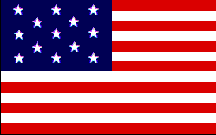 |
| Rhode Island Hope Regiment Colors 1775 |
|
First Official Navy Flag 1777 |
In American history the five-pointed star appeared on our flags allegedly to symbolize the heavens. It was chosen because the founding fathers believed no earthly king could control them. Vexillologically, it was later incorporated into the concept of Manifest Destiny and we see examples of the five-pointed star appearing in West Florida, Texas, and in California. The five-pointed star symbol migrated rather than evolving independently across American history.
 |
|
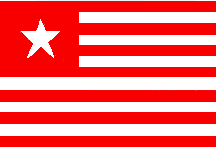 |
|
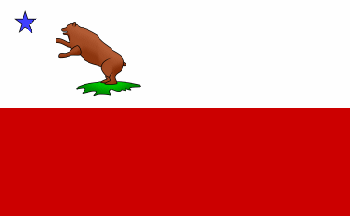 |
| Republic of West Florida 1810 |
|
Second Texas Republic Flag 1819 |
|
The Storm Bear Flag 1846 |
The use of a red five-pointed star can be seen in California as a symbol of the California "Lone Star Republic" as early as 1836.
 |
|
 |
| California Lone Star Flag 1836 |
|
Sutter's Fort Flag 1846 |
In California the distinctive red five-pointed star first appears in Monterey on Alvarado's California Lone Star Flag, later on the Sonoma Bear Flag and Sutter's "New Switzerland" Flag.
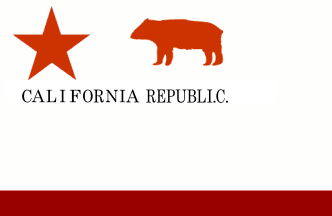 |
|
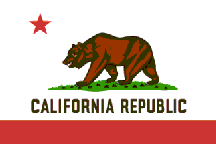 |
| The Todd Bear Flag 1846 |
|
California State Flag 1953 |
It later migrated to the Todd Bear Flag and onward to the current California State Bear Flag. Strangely enough, although it is traditionally accepted that the meaning of the the Red Star on the Californian State Flag signifies freedom and independence, there is nothing mentioned in the California State flag resolutions to document it. The red-colored five-pointed star remained a uniquely Californian feature until the Civil War, but then gained wider usage, including the present day flag of the District of Columbia, our national capitol.
|